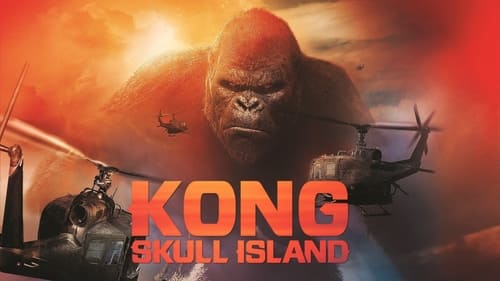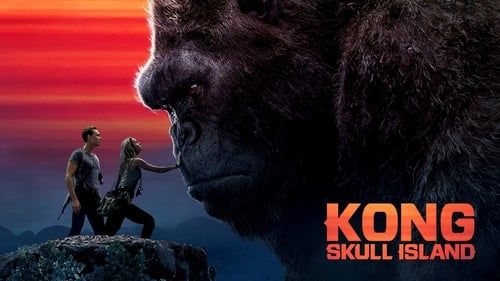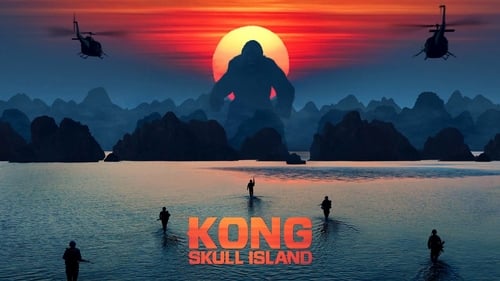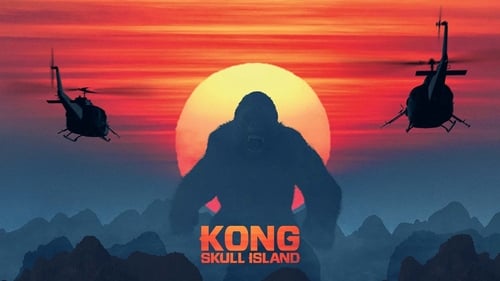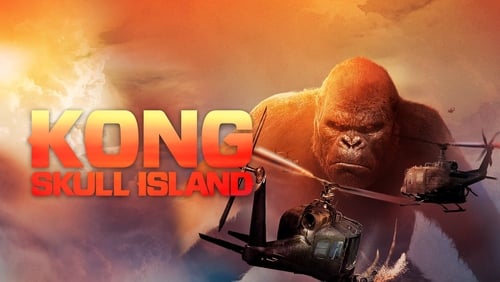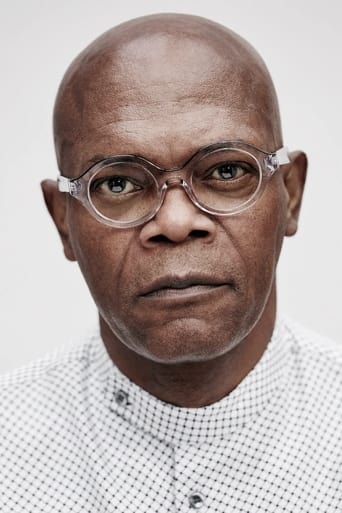jessicadraper-92504
Weird synergy: in the span of 7 days, I watched not just one but two movies featuring giant apes battling giant reptiles. Kong: Skull Island (2017) and Rampage (2018). This commentary covers both, since they have a lot in common. Oh, and SPOILERS, so be warned. Kong is King Kong set in the 1970s, right before satellites made "finding" a "lost island" pretty much impossible, and just in time to make Kong a proxy target so Samuel L. Jackson's crazy helicopter-flight commander can re-fight the Vietnam War (he gets the assignment right after the "you're going home" papers arrive for his squad) and win this time. With all the young-soldier casualties, bloody-minded irrationality, wrong-headed objectives, and eventual defeat that comes with it, of course. The rest of the movie stays at that level of imagination, too. The sacrificial-lamb soldier boys have just enough screen time and individual characteristics so that I recognize which one just got squished, speared, or chomped (of course, the one writing the letter home to his kid gets a fake-out save before dying horribly). The civilian researchers chant the appropriate scientific incantations intended to act as explanations, or possibly just a smoke screen to satisfy the undemanding who want to know why this is happening. John Goodman is totally wasted. The righteous, feminist war photographer is annoyingly righteous and lacks any sense of danger or caution; at least Kong doesn't pick her up while she screams in stereotypical style (that comes later, when Kong saves her when she falls off a cliff, and then somehow defeats the evil lizard monster by pulling its entire tongue and entrails out with the hand that's holding her, somehow not making reporter jam in the process). However, just couldn't make the movie without the soulful gaze between the giant ape and a white (of course) woman the relative size of a small mouse. Tom Hiddleston shows off his excellent cheekbones and high-class accent but tones down the sharp wit and settles for an Avenger-worthy scene with a katana and a bunch of horribly ugly flying bird-reptile-piranha things. John C. Reilly is the best part of the movie, having a grand time as a WWII pilot stranded on the island (among the weirdly painted, utterly silent natives), showing just the occasional flash of real menace amid the castaway-dementia chatter. The real stars, though, and the real point of the show, is "Hey, look at the monsters we can create with computers these days!" And they are impressive--the landscape, the giant creatures, the weather, the fire, all look realer than real. And, in the animals' case, dirtier and more vegetation- and fungus-covered. Regular gorillas and wildebeests don't have moss and mushrooms growing on them. Why would a giant one have a whole ecosystem in its fur? The big reptiles, basically snakes with shark teeth and two arm/legs, are ugly but disappointing; too alien-looking for a "primeval" island, and not coherent-looking enough to be interesting or believable as animals. Many fights, many fake-out deaths, and much roaring ensues. Kong saves the humans for no reason other than a crush on chicky-boo. John C. Reilly gets to come home to the wife who waited for him all that time and a grown son with bad sideburns. (Point for continuity and budget-savvy here--the same actor plays the son and the pilot as a young man. Extra budget bonus point for having dead-daddy soldier also act as motion-capture model for Kong, thus explaining his relative lack of scenes or spoken lines.) End credits. After-credit teaser: Godzilla! Mothra! Rodan! All real and coming to wreak havoc! If this movie makes enough money to justify remaking those movies. Again.Rampage, on the other hand, is not a remake. It's a takeoff on a 1980s video game with giant, mutated monsters as the target/antagonists. The movie sets them up for unspecified modern day in a standard "ruthless head of evil science corporation creates super-weapon serum to somehow make billions of dollars selling it to unspecified bad-guy governments or wealthy terrorists" scenario from the first scene, with the corporate she-villain sacrificing a lovely lady scientist and an entire space station to a rampage-"infected" lab rat. Yes, infected, though they never specify whether the green-mist-ooze leaking out of the cryo-capsules turned meteorites is chemical or biological; they chant CRISPR like a Word of Power, but don't really seem to know how DNA works. Or that it couldn't grow an ape, wolf, and alligator to King Kong size in a day or two. Or give them illogical, magical, chimera-like powers: Alligators can climb skyscrapers! Gorillas can regenerate any wound but grizzly-bear scratches! And, as Dwayne Johnson says, "Of course the wolf can fly." Glide, really, though why somebody thought it would be a good idea to mix flying-squirrel DNA in with all the other porcupine, armadillo, and Godzilla genes is as good a question as why the evil corporation doesn't have a better way to control the rampaged-out animals besides tiny vials of "antidote" that "reduce their aggression." But back to Dwayne, who's the real reason we saw the show in the first place (specifically, Mom picked it for her birthday matinee). He's in serious mode here, with a few light moments between him and George (yeah, the ape, with a name-riff on the curious monkey) and their sign-language banter. Because of course the ape can sign. And of course Dwayne--or David Okoye, rather--likes animals better than people, due to bad experiences with poachers. He's also mostly bulletproof, incredibly strong ("That's a big arm there--don't fight it," he tells a soldier he's choking out), and stoically macho in an endearing way. Which is why you get him to star in the show. The unspecified-agency "cowboy" is Jeffrey Dean Morgan, looking amused, lean, and grizzled in the Tommy Lee Jones role. The nice-lady scientist is Naomie Harris, spouting sciencey lines appropriately. The evil corporate overlord sister-brother team are respectively icy and petulant. He does get one of the best lines, noting to the Fed agent that "Complicity isn't a crime, right?" Then he runs out into the street and gets squished messily by the giant paw of one animal or the other. The various commandos, soldiers, and civilians competently scream, die, or wander around dazed. And a lot of them die in really nasty ways--stomped, squished, torn apart, chomped, or gulped down whole. Mostly bloodless, and weirdly weightless, but so obviously and clearly that it would be disturbing if it weren't so clearly artificial. The devouring and dismembering is almost played for laughs--as when evil corporate lady falls screaming into George's open maw and he gulps her down so easily I expected a burp to finish the joke. It also reminded me of the ill-fated nanny's horrible, prolonged dismemberment in Jurassic World, which shared many of the same characteristics: major destruction, sky-high body count, and massive fights that absolutely failed to interest me. Perhaps part of that is just taste, since I don't get excited about watching big monsters knocking things down and killing people, but part of it is the complete lack of weight, thought, or interest that went into the plot and characters. It's a lot of sound (wear earplugs if you see any of these in a theater), a lot of fury, and a lot of pixels sacrificed in the service of--well, nothing much but a couple of hours and fading memories of bass-enhanced predatory roars. They're not memorable enough even to spend energy on debating "how could that happen" and "why didn't they" over pie afterwards.
















